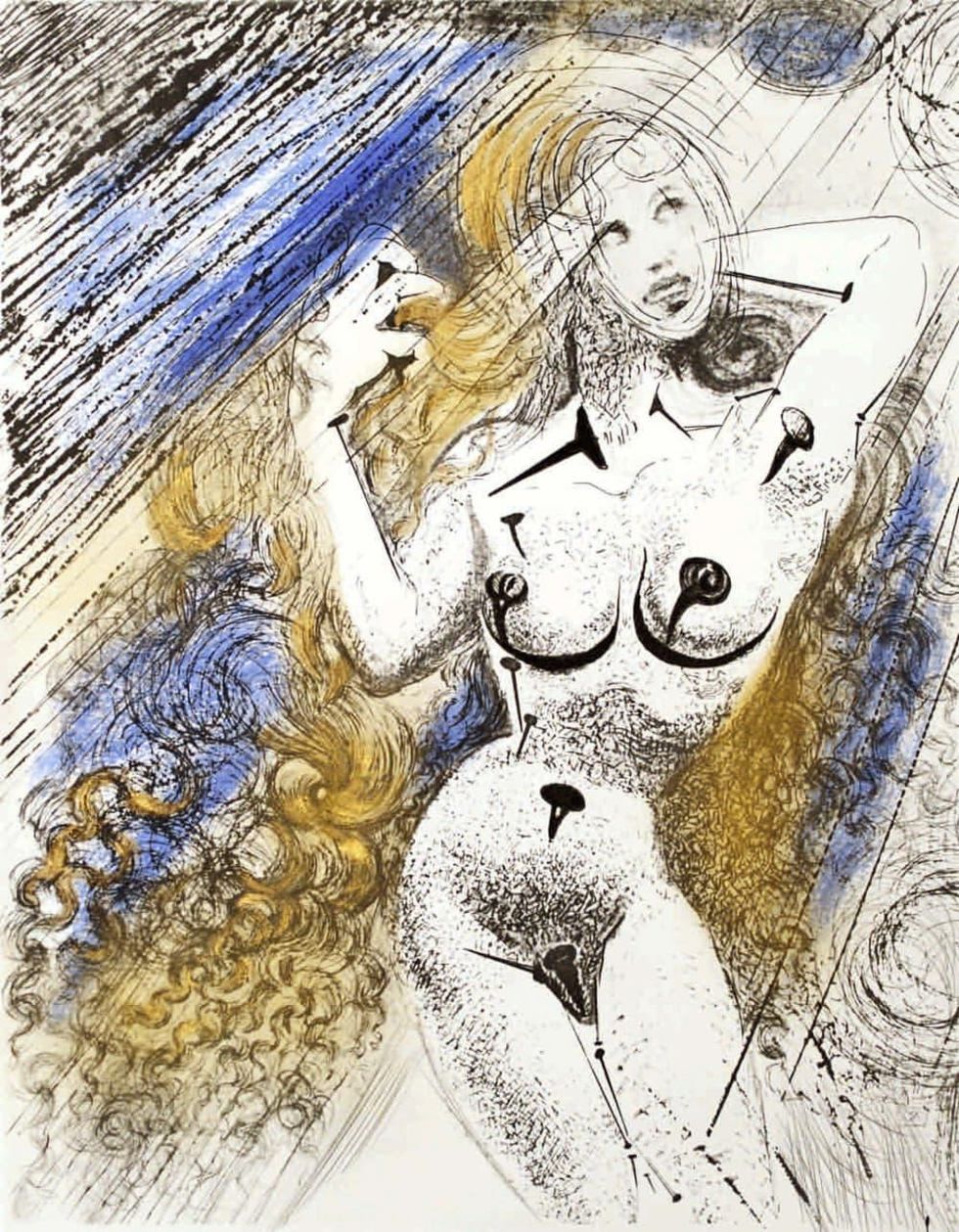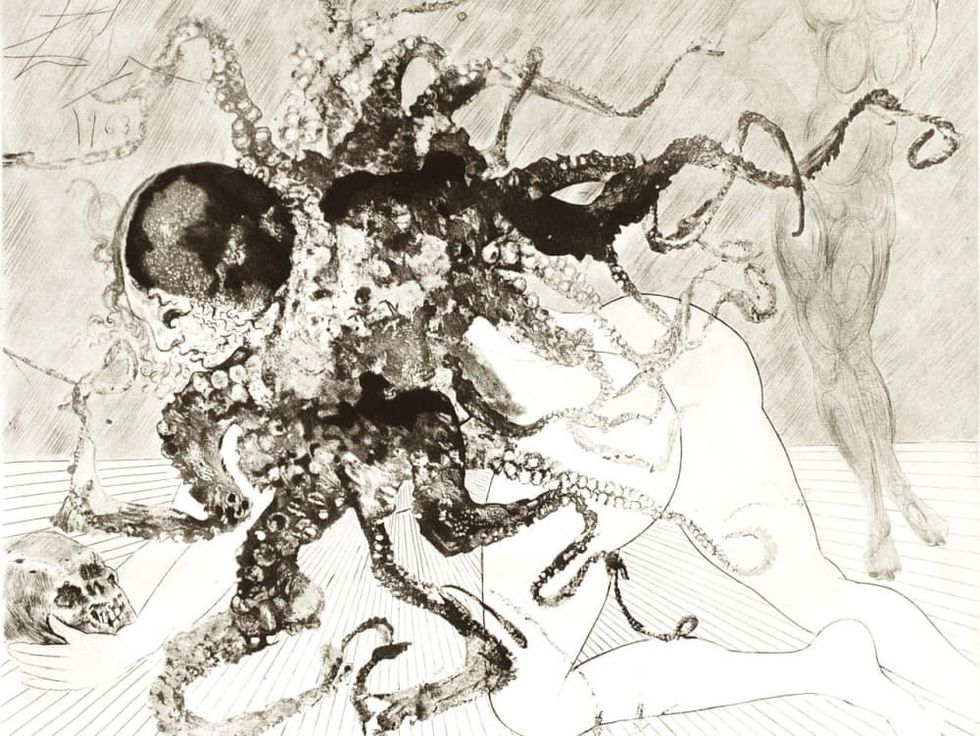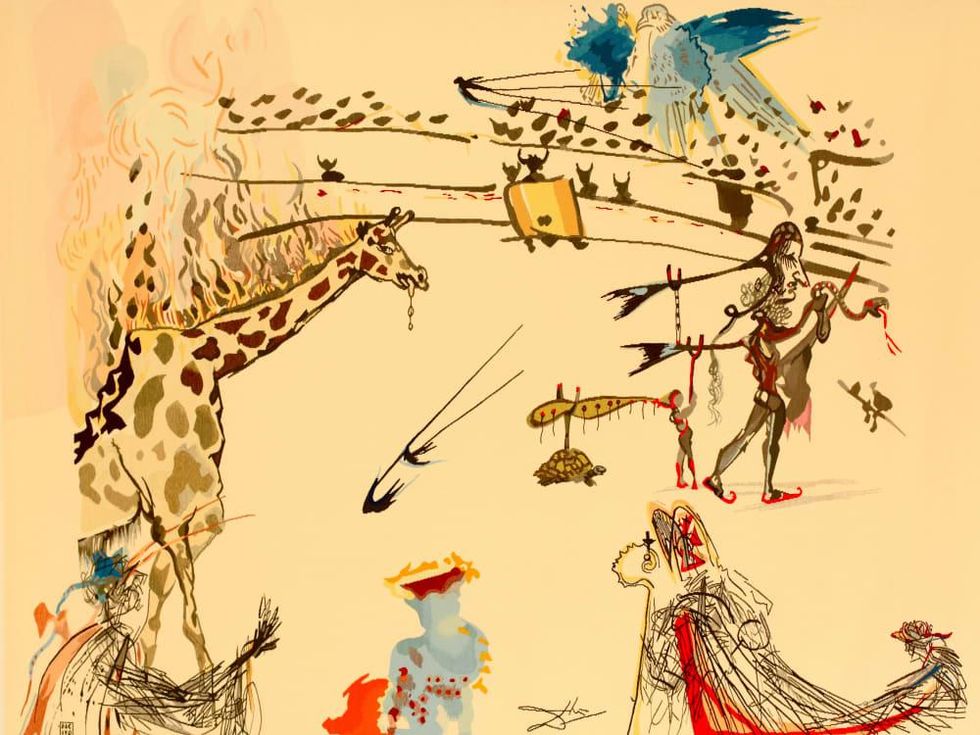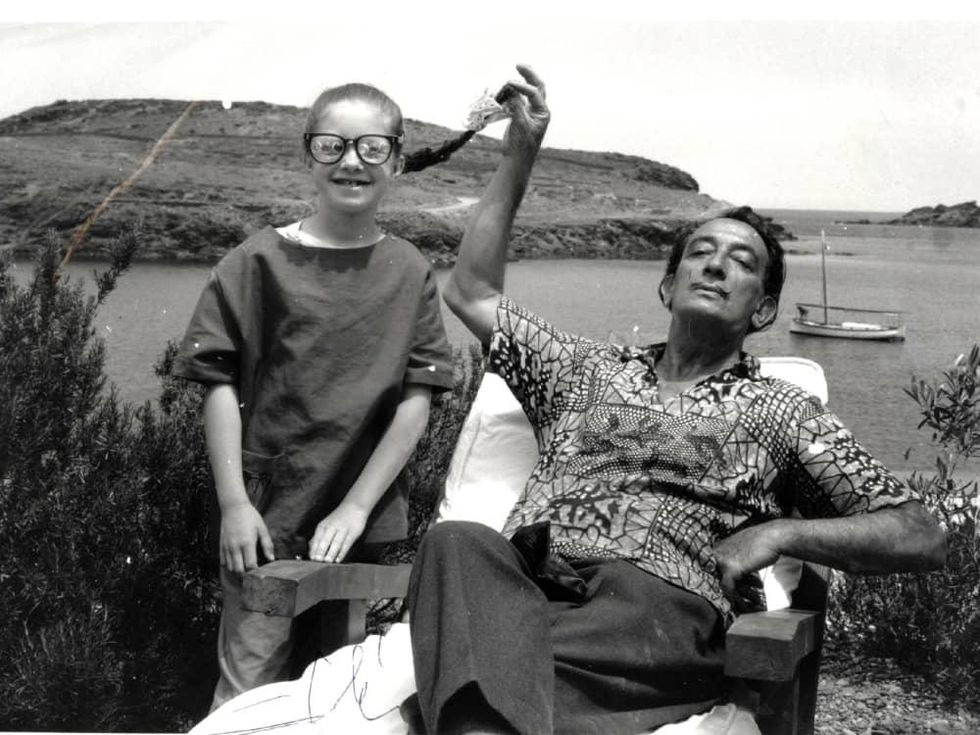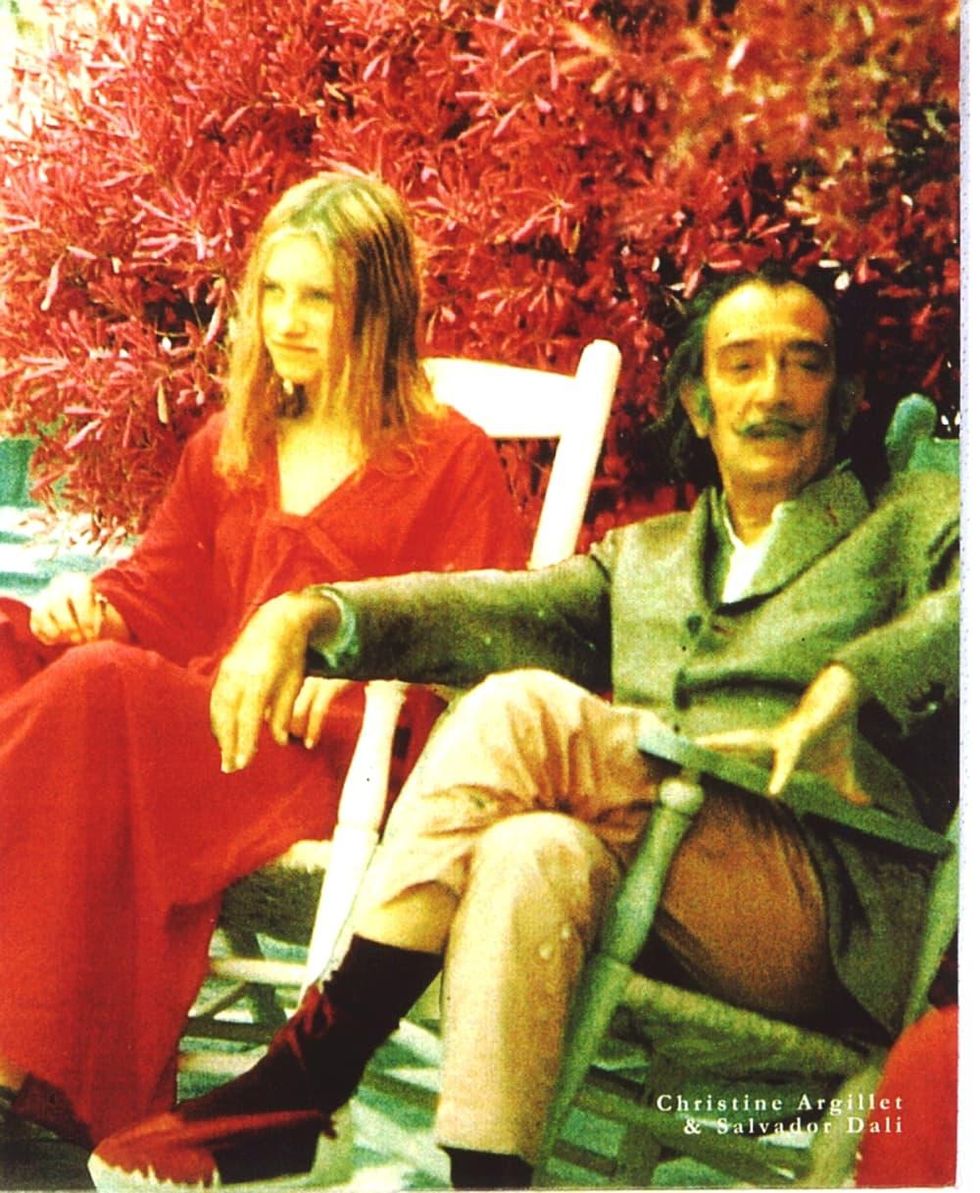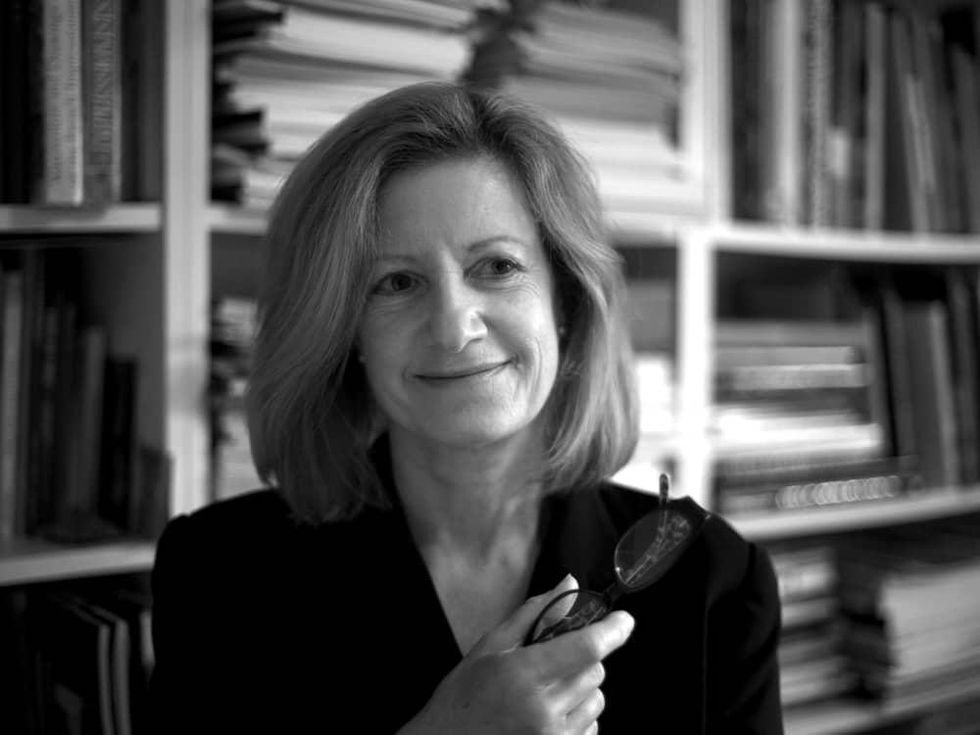Hello Dali
Fort Worth art gallery presents chance of a lifetime for Salvador Dali fans
The publisher and confidante of the renowned artist Salvador Dali, Pierre Argillet was at the center of both the Surrealist and Dada movements. Having first made Dali’s acquaintance in the 1930s, Argillet lost touch with the master during the Second World War, eventually reconnecting afterward to form a fruitful partnership.
Some of the fruits of that partnership come to Fort Worth on February 20, when previews start for “Dali: The Argillet Collection” at the Milan Gallery, featuring original etchings, Aubusson tapestries, and original watercolors — which art historians have called the finest examples of the master’s work. In addition to the artworks themselves, the exhibition brings Pierre Argillet’s daughter, Christine, for two personal appearances.
“My father had started to work with other European artists when they reconnected, but he put them aside and concentrated on working with just Dali,” says Christine, who is the curator of her father’s collection. “Dali had not so many people asking him to do something at that time, especially in France and the U.S., as it was really the fashion of abstraction.
“So it was really a chance that my father could reconnect with him at that time. He was working very fast and extremely creative.”
The duo created many remarkable copper plate prints together from 1958 to 1973, including the “Apollinaire,” “Argus,” “Surrealist Bullfight,” “Faust,” and “Mythology” series. For Christine — then just a child — spending summers next to the painter’s studio in Portlligat, Spain, gave her a unique insight into the mind of a genius.
“He was extremely kind, very playful and charming,” she recalls. “Always very enthusiastic and ready to do things. He was interested by so many topics — each time he wanted to do something, he was completely involved, and it was the never the same things twice.
“He was experimenting with all kinds of tools and creating new things. For instance, there was a sort of ashtray in his living room, and you would see it move and then notice it was standing on a stick attached to the shell of a live turtle! Very simple things like that that were fun.”
With everyone from monks to hippies to fashion editors dropping by over the ensuing years, both Argillet and Dali were exposed to “an incredible mix of curious people.” Through it all, Dali was extraordinarily prolific, producing more than 200 original works for Argillet to publish, until the process of working with the copper plates became too tiring for the aging artist.
“In 1973 Dali said to my father, ‘Now I have a lot of people commissioning me on this and on that,’ and he was older. He wanted to give him the right to use his paintings or watercolors and reproduce it as a lithograph, and my father said, ‘Absolutely not.’
“He was not going to have those next to those beautiful copper prints, so he stopped working with him. It was extremely lucky he did, because people overproduced [his lithographs], so the integrity of the Argillet Collection has remained perfect.”
When Pierre Argillet passed away 14 years ago, his daughter decided to organize exhibitions of the prints along with woven Aubusson tapestries designed by Dali. Having already been exhibited in museums such as Musee Pushkin in Moscow, the Isetan Museum of Art in Tokyo, and the Dali Museum in St. Petersburg, Florida, the collection now comes to Fort Worth’s Milan Gallery. Madame Argillet will be in attendance February 26 and 27 for a personal appearance in conjunction with the exhibit.
Because the Dali series is finite, the show is a rare opportunity to own one of a dwindling number of the master’s works.
“Many of the important etchings are sold out,” Christine says. “We have mostly the same series [we started with], but with big holes. It’s a diminishing resource. Each time we show the work, we try to refresh it and give another angle of the collection, and now we’re at the end of that.”
Although the supply of work is finite, Dali’s influence lives on, both in the expansive way he approached his subjects and his endless ability to experiment. Madame Argillet recalls a memory of Dali using an octopus found on a beach as the head of Medusa in his mythological series, immersing the creature in acid before pressing it on a copper plate.
“He was an opportunist, and he knew how to catch incidents in life to make it very special,” she says. “I would say his fabulous reactivity and sense of not having any preconceived ideas, that anything could be rediscovered in another way, is one of the best messages I kept for my life.”
---
“Dali: The Argillet Collection” runs February 20-March 20 at the Milan Gallery. Madame Argillet will be in attendance February 26-27, 6 to 8 pm. Call 817-338-4278 to RSVP for her appearance.
